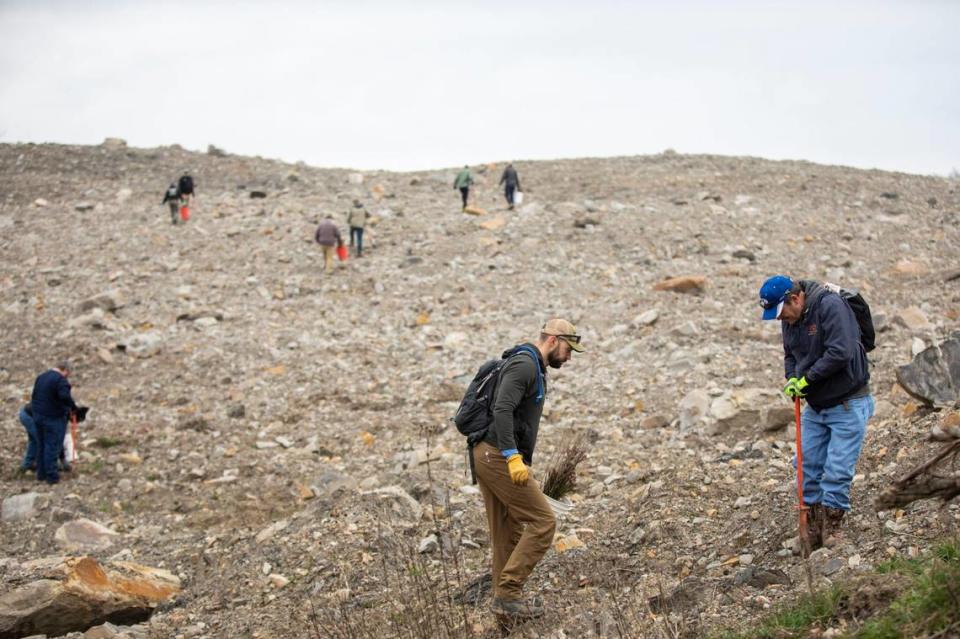How conservationists are turning an old Kentucky strip mine into a native forest
Armed with bucketfuls of trees, volunteers scampered along a Leslie County mountaintop that looked more like the moon than a mountain.
Rocks the size of fists went tumbling as shovels struck earth to make way for the nearly 8,000 native tree seedlings that about 100 volunteers hoped to plant on this old strip mining site over the course of a two-day tree planting event which began March 28. Those who return to the site this fall should find native wildflowers among the rocks. In five years, the young trees will start to make their presence obvious.
“Then at about year 15, you’ll have a closed, intact canopy. It’ll be shading the floor, they’re dropping leaves onto everything and a lot of the trees will be 15, 20 feet tall at that point,” said Michael French, the director of Green Forest Works, a University of Kentucky nonprofit that reforests former mine sites across Appalachia.
The land where this particular tree planting took place comprises a very small part of the 253,000-acre Cumberland Forest Project, a large conservation area which spans parts of Virginia, Tennessee and three counties in southeastern Kentucky. The project is managed by The Nature Conservancy.
The TNC considers the forests and protected regions of the Appalachian Mountains to be a critically important corridor for populations of wildlife and plants slowly escaping encroaching human development. Former strip mines that were “reclaimed” back to a more natural environment often don’t support the needs of native species.
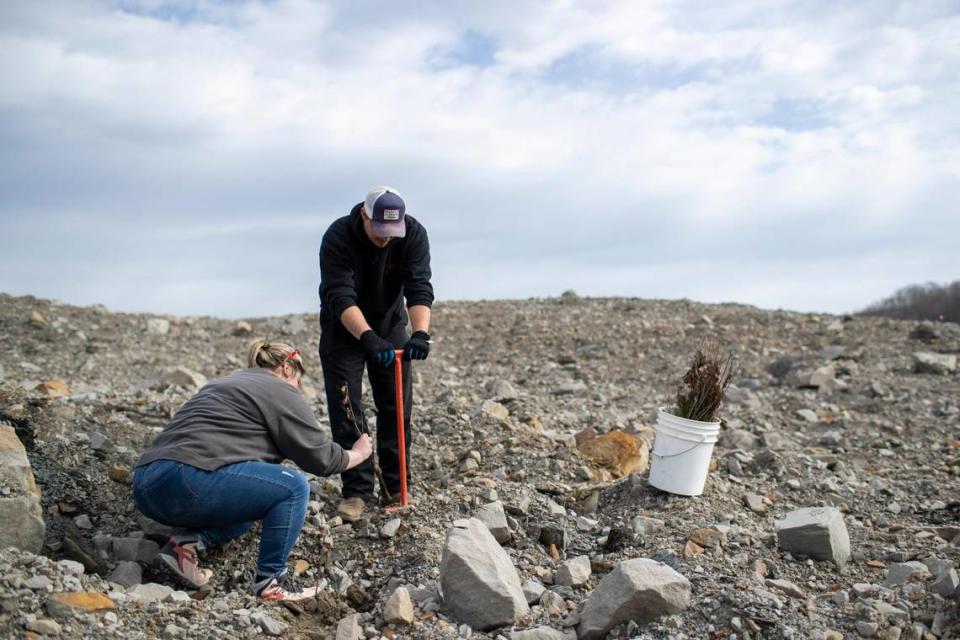
Without the tree planting on the mine site — which was purchased as part of the conservation project back in 2019 — “the land wouldn’t be as valuable to wildlife because of the low quality habitat, low quality species that are currently on it,” said Chris Garland, the Central Appalachian project director for the TNC.
Elk, which were reintroduced to Kentucky 25 years ago, will likely use the forest but also the open grassland that will precede it, said Garland, who previously worked for the state’s Department of Fish and Wildlife.
Deer, turkey, bears, bobcats and the plethora of songbirds that use the Appalachian Mountains as a migration route will also find the forest hospitable, French said.
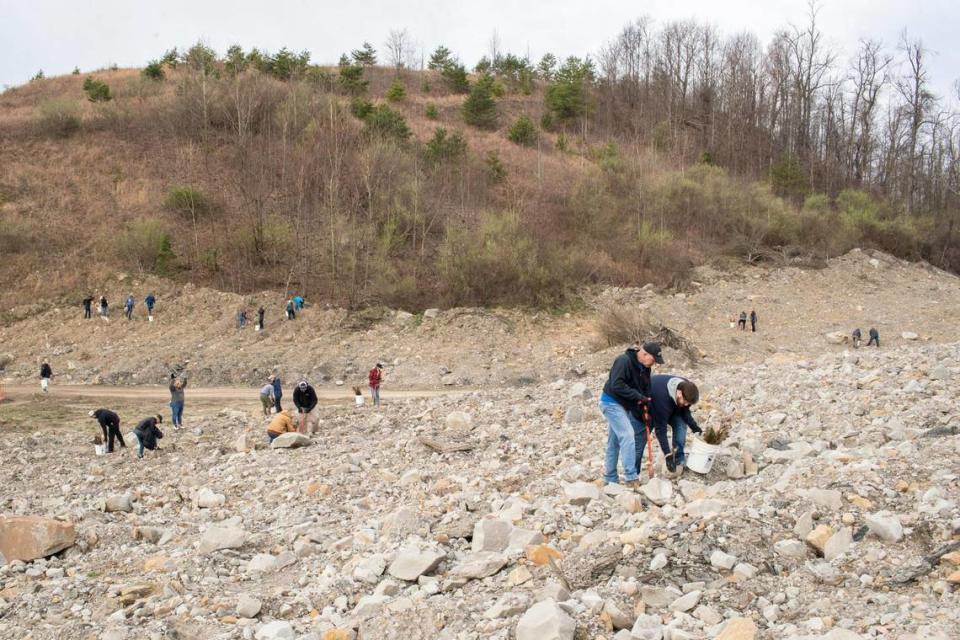
The Leslie County strip mine site where the tree planting took place was reclaimed at some point in the early 2000s. The mining company compacted the disturbed ground with bulldozers and then seeded it with “aggressive grasses and legumes,” French explained.
Native trees struggled to take root in the compacted ground, instead losing out to a variety of invasive species that don’t benefit “native wildlife the way our biodiverse forests do,” French said.
Before reforestation efforts began on the site, it looked much like some of the surrounding hillsides, covered in short grass and dotted with autumn olive shrubs, an invasive species that spreads quickly because of its ability to produce nearly 200,000 seeds annually.
To begin the reforestation process, bulldozers came and cleared unwanted vegetation, French said. Then a “really large bulldozer” with two “ripping shanks” on the back drove over the site, loosening up the previously compacted soil and bringing rocks and other soil to the surface.
“It’s like tilling your garden, except on a forest scale,” French said.
The quite rocky ground was sowed with wildflowers sourced from Roundstone Nature Seed Company in Upton, French said. Then volunteers, bearing bundles of tree seedlings, could make small holes and drop the young trees into the ground. The seedlings come from a variety of nurseries across the Southeastern U.S., he said. Some come from the Kentucky Division of Forestry, the Tennessee Division of Forestry and the Native Forest Nursery in Georgia.
“We’re planting a lot of oaks, a lot of hickories,” French said. “But we also plant black cherry, sweet birch, silky dogwood, hazelnut, American chestnut, shortleaf pine, just a really diverse mix of trees.”
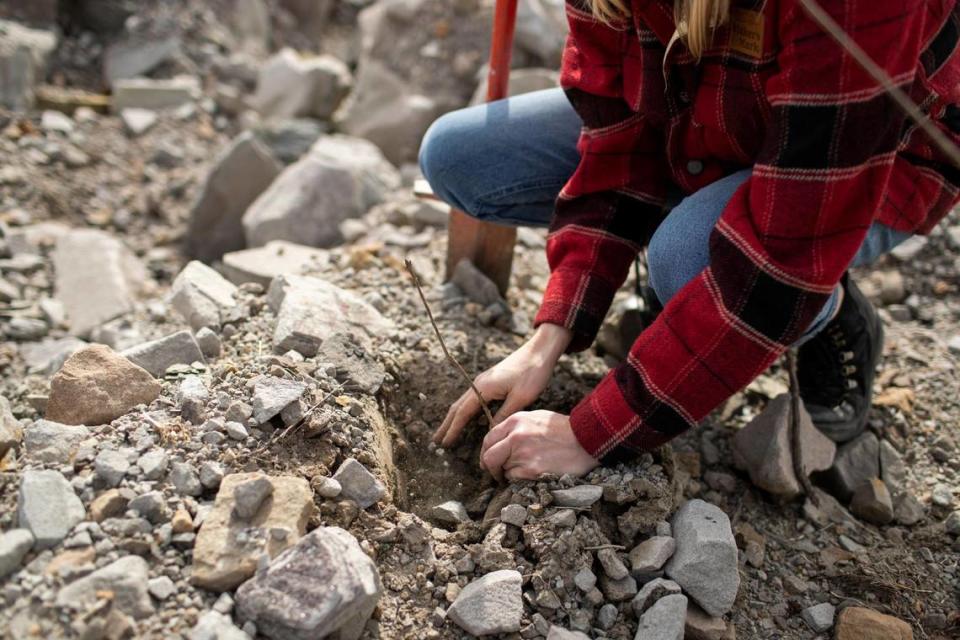
Among that diverse mix is a couple of more famous species. Billions of American chestnut trees, a once dominant tree in the U.S., were virtually wiped out in the 20th century by a wind-driven fungal blight. But a potentially blight-resistant version of the tree was being planted at the site, French told the crowd of volunteers before planting began.
Many of those volunteers were employees of Beam Suntory, the alcoholic spirits company behind Jim Beam, Basil Hayden’s and a number of other Kentucky bourbons. Close to 40% of the trees planted at the mine site were white oak — the tree species used for building bourbon barrels.
“We’re committed to planting up to 500,000 trees a year by the year 2030. Our aspirational goal is to replant more trees than are harvested for our new bourbon barrels,” said Rick Price, the senior director of environmental sustainability for Beam Suntory. He noted one mature oak tree makes about two barrels.
The short-term goal for the site is for about half of the planted trees to survive past five years, French said. At that point, the mortality rate among the trees drops significantly. Once the forest forms a canopy, the trees can block sunlight from reaching some of the resource-greedy invasive plants, giving native species a better chance to compete.
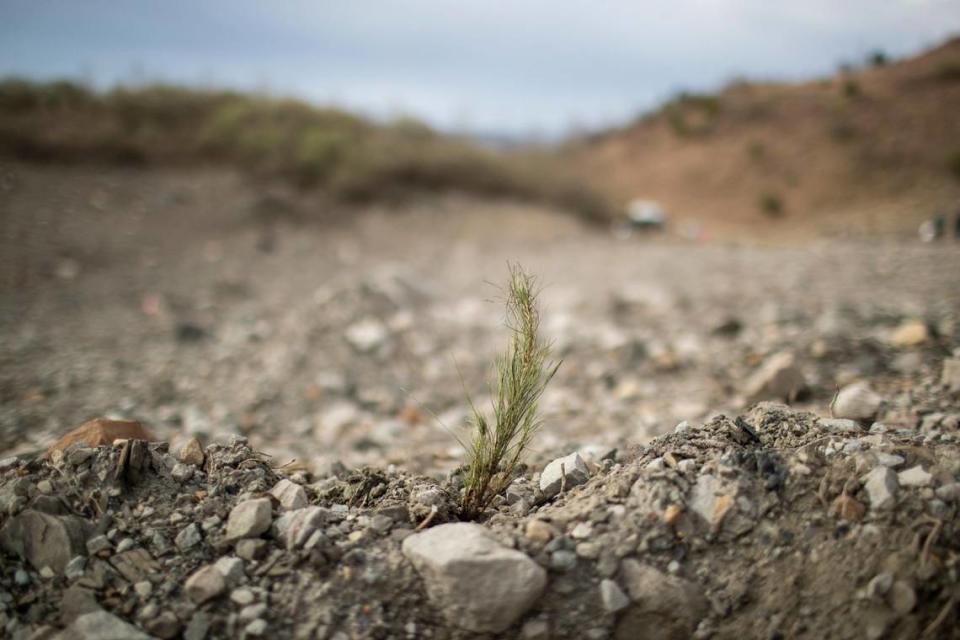
The planted sites should connect with nearby forests that are already protected and were never mined. Garland said the mature forest landscape would make for better habitat for deer and elk as well as provide better recreational opportunities and jobs.
“There’s jobs for potential forest management down the road if you get a mature forest back on landscape,” Garland said. “You know, forest management can be done in a sound way that improves the forest and doesn’t degrade it.”
Additionally, a forested area captures more carbon that contributes to global warming.
“The carbon capture of the trees is much higher than that of grasslands or any shrubs,” Garland said.
Aside from the 8,000 trees planted this week, TNC and Green Forest Works has already planted close to 58,000 trees across an adjacent 84 acres.

